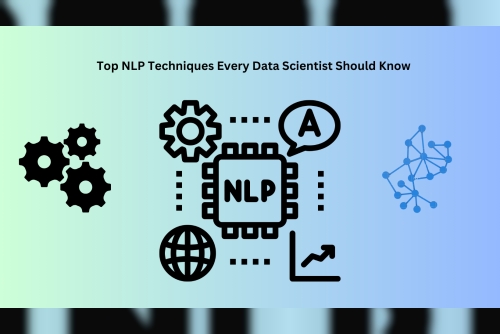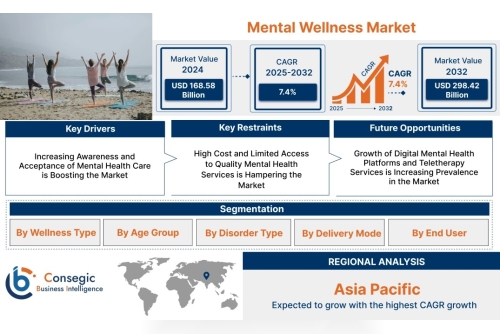Natural Language Processing (NLP) is a critical component of data science, especially given the surge in textual data from sources like social media, blogs, reviews, and customer feedback. NLP transforms unstructured text into valuable insights, making it indispensable for applications like sentiment analysis, chatbots, search engines, and more.
In this article, we’ll cover the essential NLP techniques that every data scientist should master to enhance their data processing skills.
1. TokenizationTokenization involves breaking text down into smaller components, like words or sentences. This step is crucial in making text data more manageable and easier to analyze.
Types of Tokenization:Word Tokenization: Splits a text into words. For instance, the sentence "NLP is fascinating" becomes ["NLP", "is", "fascinating"].
Sentence Tokenization: Breaks a text into sentences. For example, the text "NLP is fascinating. It is widely used." results in ["NLP is fascinating.", "It is widely used."].
Tokenization is an essential preprocessing step in most NLP tasks and enables deeper analysis.
2. Stemming and LemmatizationBoth stemming and lemmatization are used to reduce words to their base or root form, simplifying the text for analysis.
Stemming: This method chops off prefixes or suffixes to bring a word to its root form. For instance, "running" becomes "run" and "better" turns into "bett." However, stemming may produce results that aren’t always actual words.
Lemmatization: This technique is more accurate than stemming as it reduces a word to its root form by considering its context. For example, "running" becomes "run," and "better" becomes "good." Lemmatization ensures grammatically correct root forms of words.
These techniques help normalize text, lowering its complexity while preserving key information.
3. Part-of-Speech (POS) TaggingPart-of-Speech tagging involves labeling words according to their grammatical role in a sentence—whether they are nouns, verbs, adjectives, and so forth. POS tagging is essential in understanding a sentence's structure and meaning.
For instance, in the sentence "The quick brown fox jumps over the lazy dog," the parts of speech (POS) tags would be:
The (Determiner)
quick (Adjective)
brown (Adjective)
fox (Noun)
jumps (Verb)
over (Preposition)
lazy (Adjective)
dog (Noun)
POS tagging aids in various NLP tasks, including syntactic parsing, named entity recognition (NER), and text summarization.
4. Named Entity Recognition (NER)Named Entity Recognition identifies and categorizes entities within a text, such as names of people, organizations, locations, dates, etc. NER is pivotal in extracting meaningful information from text.
For example, the sentence "Google was founded by Larry Page and Sergey Brin in 1998" would have:
Google (Organization)
Larry Page (Person)
Sergey Brin (Person)
1998 (Date)
NER is extensively used in customer feedback analysis, information retrieval, and chatbot applications, helping to pinpoint crucial information from unstructured text.
5. Stop Word RemovalStop words are common words like "is," "the," and "and" that do not significantly contribute to the meaning of a sentence. Removing these words reduces data complexity and helps focus on the important words in a text.
For instance, the sentence "The cat is sitting on the mat" becomes ["cat", "sitting", "mat"] after stop words are removed, leaving behind the meaningful words.
Most NLP libraries like NLTK or spaCy provide pre-defined lists of stop words, which can be customized depending on the application.
6. TF-IDF (Term Frequency-Inverse Document Frequency)TF-IDF is a statistical technique that helps determine how important a word is in a document, relative to a larger corpus of documents. It combines:
Term Frequency (TF): refers to the count of how often a word appears in a document.
Inverse Document Frequency (IDF): A measure of how unique or rare a word is across the entire corpus.
The product of these two values identifies words that are important within a document but rare across the corpus. In a document discussing technology, for example, words like "the" would have a low TF-IDF score, whereas domain-specific terms like "AI" would score higher.
7. Word Embeddings (Word2Vec, GloVe)Word embeddings represent words as numerical vectors. Unlike one-hot encoding, embeddings capture the semantic relationships between words. Word2Vec and GloVe are two common models used for generating these embeddings.
Word2Vec: Learns word associations by analyzing large amounts of text and placing related words closer in a vector space.
GloVe: Focuses on global word co-occurrence statistics to represent words in a meaningful vector form.
For instance, in a vector space, "king" and "queen" would be close to each other due to their semantic similarity. Word embeddings are crucial in text classification, sentiment analysis, and other NLP tasks.
8. Sentiment AnalysisSentiment analysis identifies the emotional tone of a piece of text, determining whether the sentiment is positive, negative, or neutral. This technique is widely used in evaluating customer reviews, social media posts, and surveys.
For example, the sentence "I love this product! " would be classified as positive, whereas "The service was disappointing" would be categorized as negative.
Sentiment analysis finds applications in brand monitoring, customer service, and public opinion analysis.
9. Text SummarizationText summarization involves condensing a lengthy text into a shorter version while preserving its key points. There are two primary methods:
Extractive Summarization: Selects the most relevant sentences directly from the text.
Abstractive Summarization: Generates a brief version by rephrasing the key ideas in new sentences.
This technique is useful for summarizing articles, reports, and documents, helping readers grasp essential points quickly.
10. Language ModelingLanguage modeling predicts the next word in a sequence, making it valuable for tasks like machine translation, speech recognition, and text generation. Popular language models include:
N-gram Models: Predict the next word based on the previous n words.
Neural Language Models (e.g., GPT): Use deep learning to generate more accurate and context-aware predictions.
Language modeling is integral to creating coherent and contextually appropriate text in applications such as chatbots and content generation.
ConclusionMastering these core NLP techniques is crucial for any data scientist dealing with text data. From tokenization to language modeling, each method serves a unique purpose in processing, analyzing, and extracting valuable insights from textual information. By building a strong foundation in these NLP methods, data scientists can unlock the true potential of language-driven data analysis.
If you're eager to learn NLP, along with other tools and technologies in a comprehensive Data Science course in Delhi, Noida, Lucknow, Nagpur, and other cities across India, you can take a course and dive deep into NLP, machine learning, data visualization, and more exciting topics to enhance your skills and career prospects.












